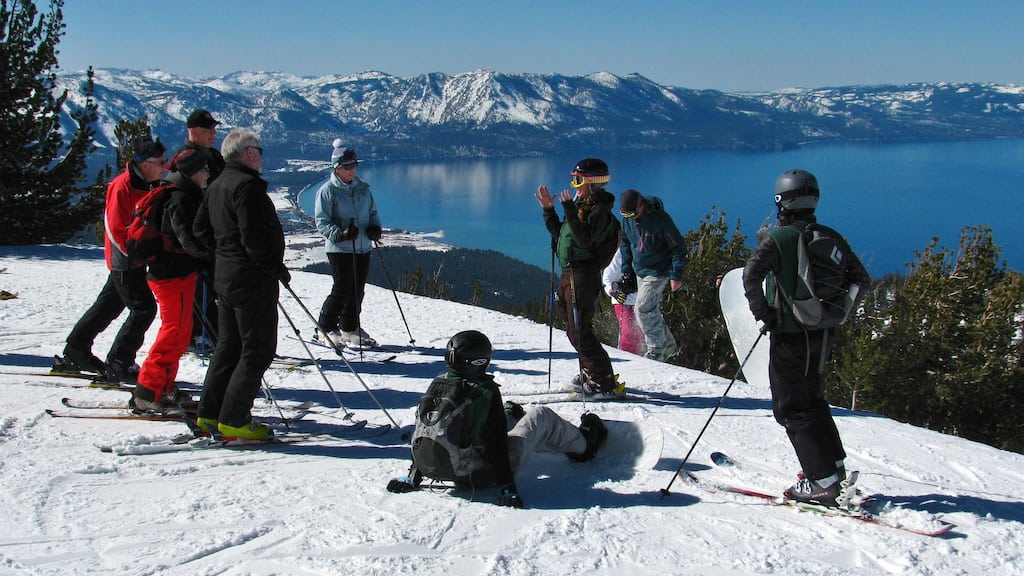Skift Take
Expensive, high-tech equipment is needed to keep snow on resorts mountains pushing small operations out of existence as larger resorts with means manage to survive despite dropping snow levels.
Most skiers at Heavenly in Lake Tahoe never even notice the snowmaking pump house, which is just a shed next to the day lodge at the base of the mountain.
You can’t hear the hum of the pumps and motors until you’re inside. The whole operation is designed to be unobtrusive: A day on the hill should be exhilarating, free of any reminder that the resort company is engaged in an all-out battle with the weather.
That little pump house is, in fact, Heavenly’s weather center, where every day a crew of 38 decides exactly how much snow it can manufacture and when and where to do it. There are maps on the wall and three white boards that help them plan out the day. Four computers constantly monitor the temperature, humidity, air pressure, and water flow of Heavenly’s 66 fully automated fan guns. “I usually have four or five weather websites up at the same time. It’s the major part of my job,” says Barrett Burghard, senior manager of snow surfaces for Heavenly. “We will make snow 24-7, if it’s cold enough.”
Next to one of the computers sits a book the color of sunset: The Teaching of Buddha. Burghard has legitimate need for stress management. For the second year in a row, snowfall has been abysmal. Statewide, the snowpack was 25 percent of the historical average—“dismally meager,” according to the California Department of Water Resources. January was the driest on record. By mid-February, almost every hill in Tahoe had received less than 50 percent of its average snowfall.
Less snow means fewer skiers, and that means decreasing revenue for the state’s $1.3 billion ski industry. As of last season, skier visits—the industry’s metric of days skied per person—were down 28 percent from the 2010-11 season. Smaller resorts at lower elevations couldn’t survive: Badger Pass, which is in Yosemite National Park, and Dodge Ridge, which is just outside it, opened in December, then closed a month later.
China Peak followed in mid-February. “This has been what I’m now calling the ‘cruelest’ winter I’ve ever seen,” China Peak Chief Executive Officer Tim Cohee wrote in an open letter on Facebook. “We have not only dealt with no snow, but also with incredibly marginal snowmaking conditions. … In nearly four decades I have never worked for a resort that closed mid winter; now I have.”
Heavenly is in a different position. It’s owned by Vail Resorts, a $3.1 billion, Denver-based resort company that has equi


